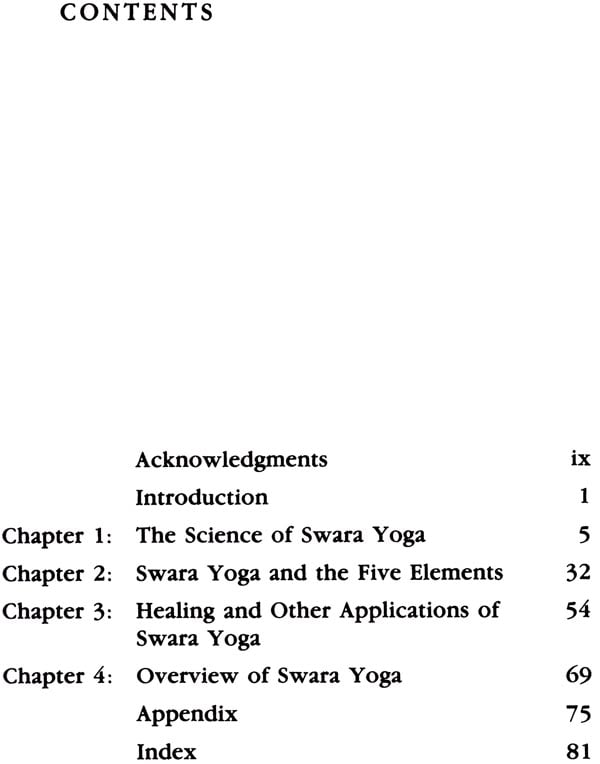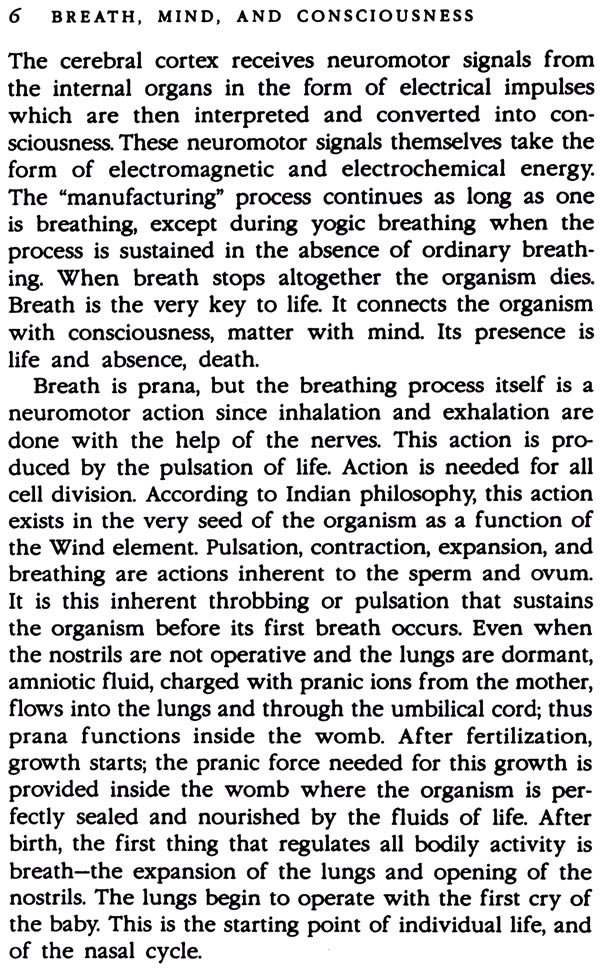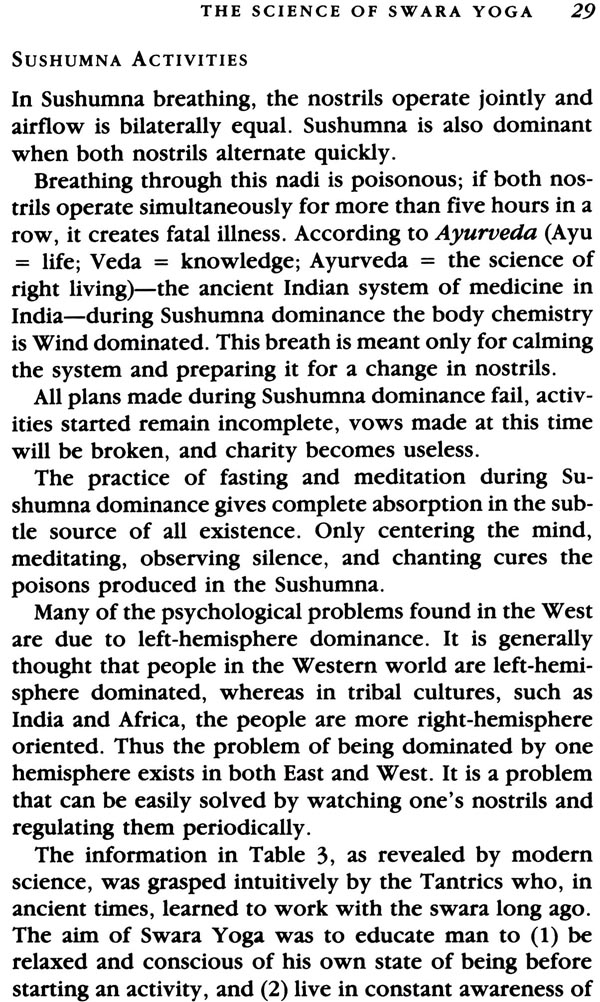
Breath, Mind and Consciousness
Book Specification
| Item Code: | NAQ924 |
| Author: | Harish Johari |
| Publisher: | Inner Traditions India Home Office. |
| Language: | English |
| Edition: | 1989 |
| ISBN: | 9780892816934 |
| Pages: | 97 (10 B/W Illustrations) |
| Cover: | PAPERBACK |
| Other Details | 8.50 X 5.50 inch |
| Weight | 140 gm |
Book Description
Modern scientists are just now beginning to understand what yogis have known for centuries-that the life force animating our physical bodies is regulated by breath and that the breath energy is controlled by the mind. The esoteric and practical science of Swar Yoga-presented in this book for the first time in English-teaches conscious observation and control of breathing patterns to maximize energy and vitality.
Tantric Scholar and author of Tools for Tantra, Chakras, and The Healing Power of Gemstones, Harish Johari brings an in-depth knowledge of ancient Hindu sciences to this discussion of breath and the yoga of balanced living. His is the first guidebook for Westerners to offer a comprehensive treatment of the subject, providing information from Sanskrit texts otherwise unavailable in the English Language. He explains the sensory network of the nose and its effect on the subtle channels of energy throughout the body, showing the direct link between the practice of conscious breathing and the electrochemical balance of the brain and nervous system. He also shows how the breath, alternating between left and right nostrils, is influenced by solar and lunar forces and how one can attune to these natural rhythms and universal laws for greater health and well-being.
Johari's mastery of Swar Yoga techniques is apparent in the broad scope of Breath, Minch and Consciousness: included are a discussion of the phases of the five elements in the breathing cycle, exercises for physical and psychic healing, the means for determining which nostril is active, and instructions for conceiving a son or a daughter.
While continuing his lifetime study and practice of tantra, Harish Johari is a painter, sculptor, gemmologist, and composer of Indian music.
BREATH IS the physical counterpart of the mind. The mind uses the cerebral cortex of the brain, the twin hemispheres, as its tool. These two hemi-spheres coordinate with the entire organism through neuromotor responses. All neuromotor activities, all sensory and motor functions of the body, are performed with the help of the breath. So breath is mind in action! Breath provides the Pranic force to the organism. This Pranic force, working as the Air element, creates movement, pulsation, vibration, and life. The word "spirit" comes from the Latin word spiritus, which literally means breath.
Mind and consciousness are abstract terms-whereas breath is a physiological reality. The study of consciousness begins with the study of the true science of breathing. Breath induces movement. Breathing itself is a neuromotor activity. The science of controlling prana is known as pranayama, a branch of Hatha Yoga. The term Yoga, which literally means union, refers to a discipline, a way of evolving the higher faculties of mind. There are many paths in Yoga, but in essence they all have one goal-the union of the self with God. On the physical level, this means the union of the lower brain with the upper brain. Man's faculties of abstract thinking and his aspirations for the higher ideals of life (seated in the cerebral cortex) often conflict with his instinctive, animal nature (seated in the lower brain). Through Yoga, man can learn to master his lower brain and pursue higher ideals, to act in accord with the law of universal good. While his animalistic nature makes man hedonistic and selfish, yogic training makes him selfless.
All yogic disciplines clearly state that a direct relation-ship exists between prana and mind and that by con-trolling or mastering prana one can master the mind. According to Yoga Kundalyupanishad, the breathing process creates images in the mind; by controlling the breathing process through pranayama, the breath be-comes calm, images do not disturb the mind, and the internal dialogue stops. According to Dr. David Shannahoff-Khalsa of the Salk Institute for Biological Studies in San Diego, "The nose is an instrument for altering cortical activity." (See Figure 1.) Stop the prana and mental modifications will stop, and the yogi will be able to establish himself in bliss (samadhi). Prana refers not only to the flow of oxygen into the organism but to all components of life force. Prana is the vital life force that sustains all living organisms. Pranic energy is available in negative ions, oxygen, ozone, and solar radiation, but for human beings its main source is the breath.
Swara Yoga is the science of nasal breath. It has rightly been called the "ancient technology of mind."
**Contents and Sample Pages**










